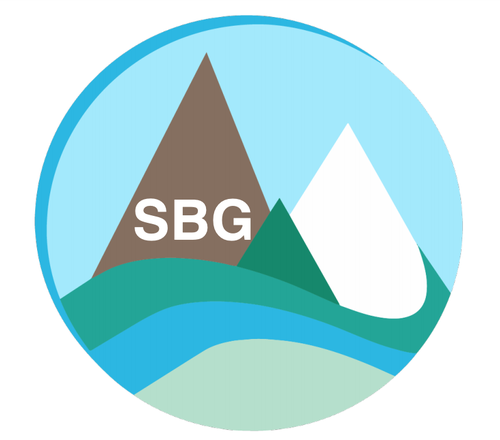Documentation Revision Date: 2025-05-21
Dataset Version: 1
Summary
There is one file in Portable Document Format (.PDF) in this dataset.
Citation
Eckert, R., C. Ade, D.R. Thompson, K. Cawse-Nicholson, U.N. Bohn, P.G. Brodrick, A. Cardoso, K.D. Chadwick, C. Elder, A. Flores-Anderson, L. Guild, C.M. Lee, K.M.A. Luis, A.M. Portier, S. Schollaert Uz, N. Stavros, K. Turpie, Y. Angel, M.M. Gierach, G.H. Halverson, B.E. Hubbard, D. Kathuria, S. Kabir, R.F. Kokaly, C.E. Miller, N. Pahlevan, M.A. Pascolini-Campbell, M.S. Ramsey, S.P. Serbin, A. Shiklomanov, P.A. Townsend, T. Zheng, A. Sen, R.R. Basilio, D.S. Schimel, S.J. Hook, and R.O. Green. 2025. SBG 2024 TIM Meeting Summary: Current Progress and Future Goals of the SBG Mission. ORNL DAAC, Oak Ridge, Tennessee, USA. https://doi.org/10.3334/ORNLDAAC/2433
Table of Contents
- Dataset Overview
- Data Characteristics
- Application and Derivation
- Quality Assessment
- Data Acquisition, Materials, and Methods
- Data Access
- References
Dataset Overview
This report summarizes the community discussions at the 2024 NASA Surface Biology and Geology (SBG) Technical Interchange Meeting (TIM) from May 29 to 31, 2024, in Washington, D.C., US. The report provides the broader science community with information on the current state of the SBG mission, SBG-relevant science and applications, and future work needed. The SBG mission includes a visible to shortwave infrared (VSWIR) spectrometer and a thermal infrared (TIR) radiometer as outlined in the 2017-2027 National Academies' Decadal Survey. Over 150 in-person and 200 online community members from across research and applications areas gathered to learn about the current state of the mission, discuss needed science and applications developments, provide input on SBG- TIR and SBG- VSWIR acquisition decisions, and learn about how to access precursor data from Earth Surface Mineral Dust Source InvesTigation (EMIT), ECOsystem Spaceborne Thermal Radiometer Experiment on Space Station (ECOSTRESS), and relevant airborne instruments. This paper discusses the current state of the SBG mission and the SBG-TIR and SBG-VSWIR instruments, including algorithm development plans, open science approach, and ongoing collaborations with international partners. It presents information on precursor data from the EMIT and ECOSTRESS instruments that can be used to develop and test algorithms for SBG as well as synergistic data from relevant airborne campaigns. These precursor data are also part of a NASA Distributed Active Archive Centers (DAACs) effort to provide tools and tutorials for easier data access and lower the barrier of entry for the use of SBG-like data.
The document in this dataset summarizes discussions from the various SBG research and applications communities, focusing on opportunities for use of SBG data and what development is needed to realize those opportunities, both algorithmically and from a capacity-building perspective. It offers an overview of ongoing acquisition decisions for the SBG-TIR and SBG-VSWIR instruments and includes community discussion on the impacts of those decisions across research and applications areas.
Acknowledgements:
A portion of this research was carried out at the Jet Propulsion Laboratory, California Institute of Technology, under a contract with the National Aeronautics and Space Administration (80NM0018D0004).
Data Characteristics
Spatial Coverage: Washington D.C., U.S.
Temporal Coverage: 2024-05-24 to 2024-05-31
Data File Information
There is one file in PDF format: SBG_2024_Technical_Interchange_Meeting_Summary.pdf
Application and Derivation
The report provides the current progress and future goals of the Surface Biology and Geology mission as of May, 2024. The document presents information on precursor data from the EMIT and ECOSTRESS instruments that can be used to develop and test algorithms for SBG as well as synergistic data from relevant airborne campaigns. These precursor data are also part of a NASA Distributed Active Archive Centers (DAACs) effort to provide tools and tutorials for easier data access and lower the barrier of entry for the use of SBG-like data.
Quality Assessment
Not applicable.
Data Acquisition, Materials, and Methods
The document in this dataset summarizes discussions from the various SBG research and applications communities. Refer to SBG_2024_Technical_Interchange_Meeting_Summary.pdf for additional information.
Data Access
These data are available through the Oak Ridge National Laboratory (ORNL) Distributed Active Archive Center (DAAC).
SBG 2024 TIM Meeting Summary: Current Progress and Future Goals of the SBG Mission
Contact for Data Center Access Information:
- E-mail: uso@daac.ornl.gov
- Telephone: +1 (865) 241-3952
References
None.
